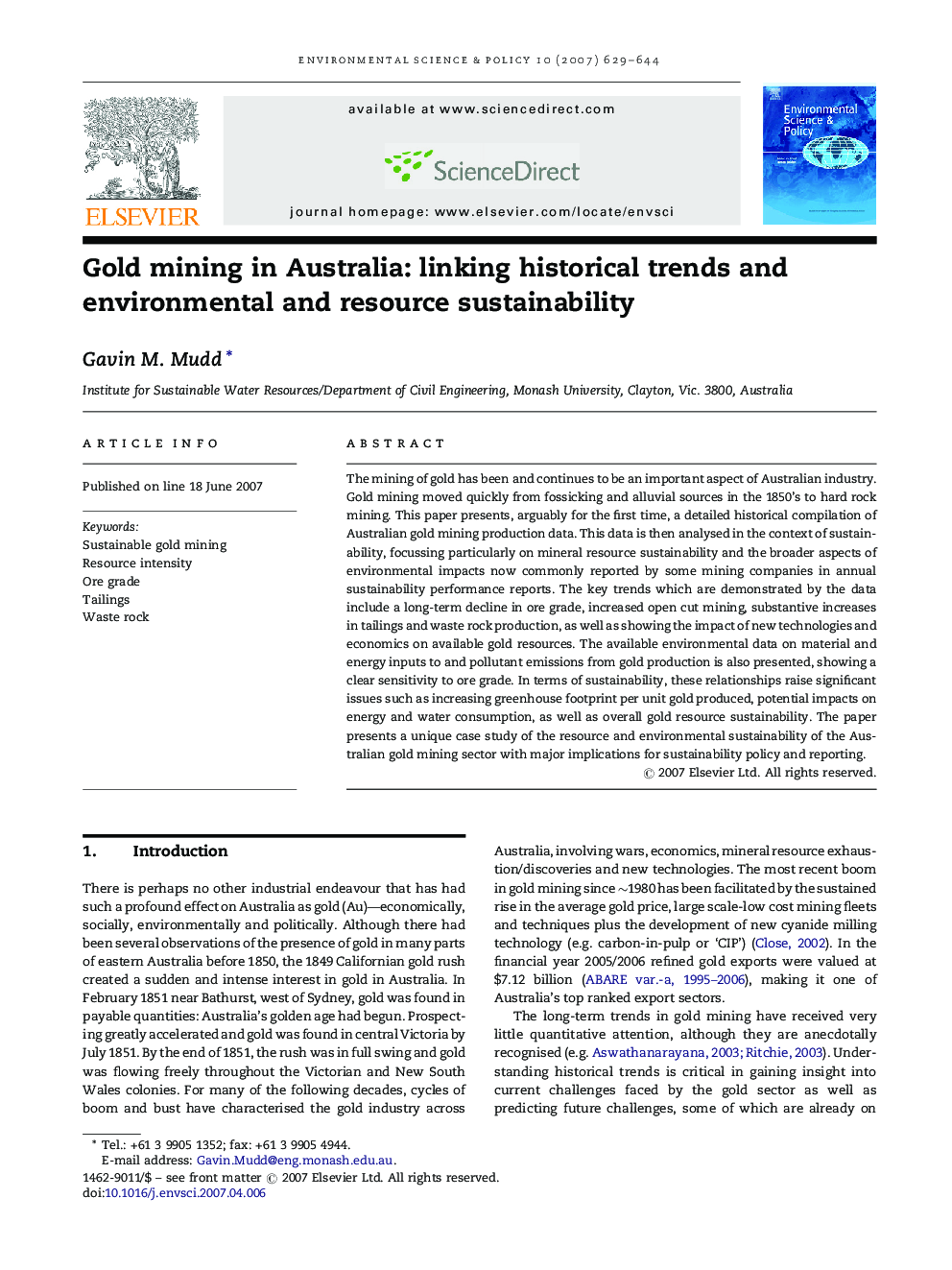| Article ID | Journal | Published Year | Pages | File Type |
|---|---|---|---|---|
| 1054240 | Environmental Science & Policy | 2007 | 16 Pages |
The mining of gold has been and continues to be an important aspect of Australian industry. Gold mining moved quickly from fossicking and alluvial sources in the 1850's to hard rock mining. This paper presents, arguably for the first time, a detailed historical compilation of Australian gold mining production data. This data is then analysed in the context of sustainability, focussing particularly on mineral resource sustainability and the broader aspects of environmental impacts now commonly reported by some mining companies in annual sustainability performance reports. The key trends which are demonstrated by the data include a long-term decline in ore grade, increased open cut mining, substantive increases in tailings and waste rock production, as well as showing the impact of new technologies and economics on available gold resources. The available environmental data on material and energy inputs to and pollutant emissions from gold production is also presented, showing a clear sensitivity to ore grade. In terms of sustainability, these relationships raise significant issues such as increasing greenhouse footprint per unit gold produced, potential impacts on energy and water consumption, as well as overall gold resource sustainability. The paper presents a unique case study of the resource and environmental sustainability of the Australian gold mining sector with major implications for sustainability policy and reporting.
